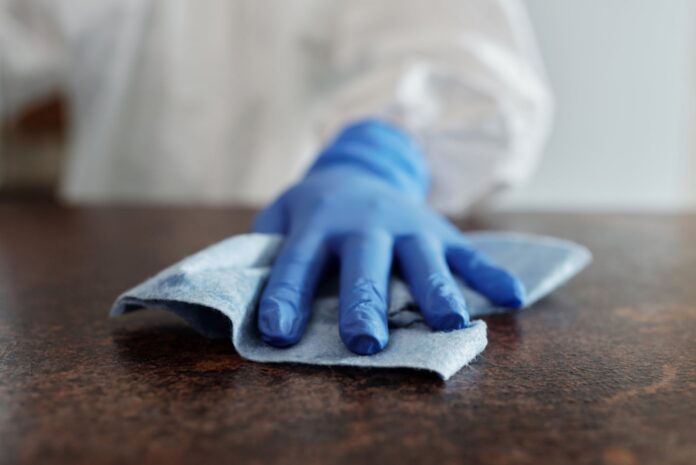
It is no surprise that an office is typically a dirty environment. An office is filled with hard to reach nooks and crannies. There are many spots easily missed in general cleaning. In these places, both dirt and bacteria hide.
A general clean will not be enough to handle all of this issue effectively. A deep clean will leave an office spotless and sanitised, keeping people safe and happy. To know more how to achieve these results continue reading to learn 3 ways of deep cleaning.
Use a Well Prepared Team
In preparation for a deep clean make sure all people cleaning are well protected. In order to take care of ingrained dirt cleaning agents will be used to aid the cleansing process.
Many cleaning solutions can be irritants when in contact with the body. Wearing a protective bodysuit, goggles, gloves and a face mask allows for the use of cleaning agents without the risk of injury.
Although protective clothing will protect against harm from cleaning agents there is still the risk of infection people need to prepare against. Wearing protective clothing helps defend against the spread of viral particles. However, people must remember to avoid facial contact with an exposed hand or glove that has been placed on an unsanitised surface. Failure to do so will risk infection.
Sanitise High Contact Areas
When deep cleaning an office it is important to target areas where germs gather to reduce the number of people made sick. Germs are commonplace in high traffic parts of the workplace such as door handles, keyboards and keypad surfaces.
People transport germs on their hands from their homes and public transport. They then spread bacteria to surfaces they interact with them throughout the day. Contact with these surfaces will also pass the germs onto a person’s hand where they can spread it to a different place or to their face, making themselves ill.
With the coronavirus pandemic, this issue is made even more dangerous due to the high infection rate increasing the chances of illness. To sanitise high traffic areas use disinfectant spray, a cloth and a cotton bud dipped in alcohol for any tight sections. Illness and the coronavirus won’t spread as easily around the workplace if these areas are sanitised.
Clean Furniture
Over time an office will suffer stains, bacteria and odours on its chairs, tables and desks. This presents an unprofessional image to visiting clients, increases the chance of falling ill and creates an environment that people are uncomfortable working in.
For a complete deep clean it is crucial when cleaning desk, cabinet and table furniture that not only the outside and inside are treated. Doing this removes dust, grime and bugs from their hard surfaces.
To handle blemishes on soft surface furniture an upholstery attachment on a vacuum will allow for trapped dirt buried in the fibers to be cleaned. If a chair is water-safe use spot cleaning with a liquid cleaning agent to remove stains and smells to improve the quality of the office.
When cleaning furniture It is best to pull out all the furniture. This allows people to clean the sections of furniture that are usually pressed against a wall and covered up. This place is usually neglected during a clean so the buildup of grime should be dealt with.
Pulling out furniture also makes it easier to clean the floor below. Allergens and dust will have accumulated in this difficult spot. Vacuuming will get rid of the dirt, making the room more hygienic and improving the air quality.
Conclusion
A deep clean provides a fresh environment for people to be comfortable in without distraction or health risk. Follow these methods to get a better understanding of how to clean an office and properly protect the people inside it. If your office has been contaminated with Covid-19 don’t hesitate and seek out professional deep cleaning for a well-prepared team of experts.





